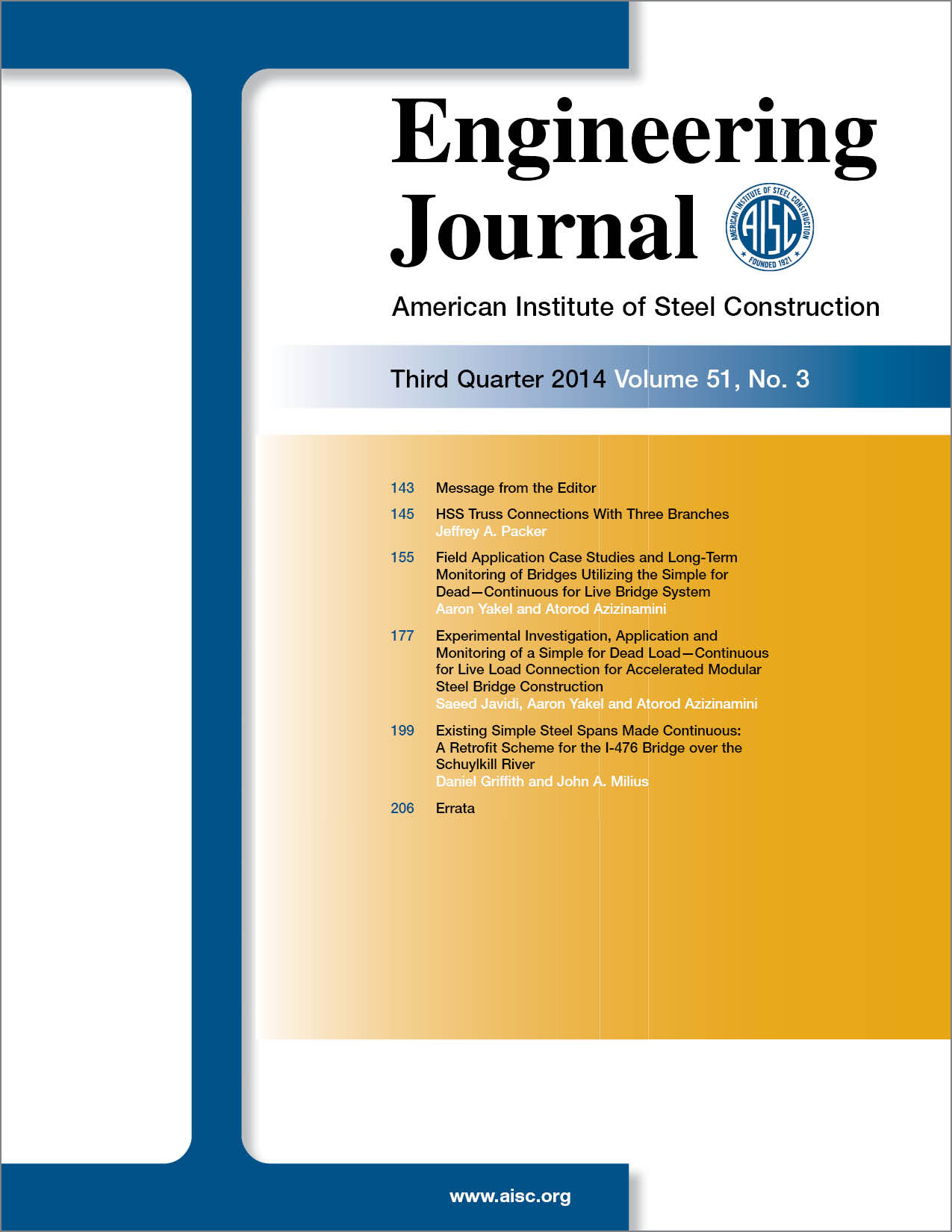Existing Simple Steel Spans Made Continuous: A Retrofit Scheme for the I-476 Bridge over the Schuylkill River
DOI:
https://doi.org/10.62913/engj.v51i3.1066Keywords:
Simple-span-made-continuous (SSMC), bridge rehabilitation, modified fixity conditions, steel wedge plates, bolted steel splice plates, full-depth concrete diaphragm, staged construction, sequential bearing replacement, steel bolstersAbstract
The rehabilitation of the SR 476 Bridge over the Schuylkill River near Philadelphia, Pennsylvania, converted existing steel multigirder simple spans into three- and four-span continuous units. Employing a design method typically used for construction of new simple-span-made-continuous (SSMC) steel girder bridges, it is believed to be the first bridge rehabilitation project in Pennsylvania to use such a scheme. The rehabilitation design upgraded load capacity of the girders to meet current LRFD code requirements. The SSMC design, coupled with other deck joint elimination techniques, was able to reduce the combined number of deck joints on the northbound and southbound structures from 25 to 8. With nearly all previous steel deterioration occurring at deck joints, this substantial reduction in deck joints will aid in extending the remaining life of the bridge. This paper will illustrate the construction methods employed for conversion of the bridge from multiple simple spans to continuous spans. The paper will also provide detailed insight into the many design requirements for this structural conversion, from substructure retrofits and sequential bearing replacements to superstructure continuity and full-depth concrete diaphragm details.

